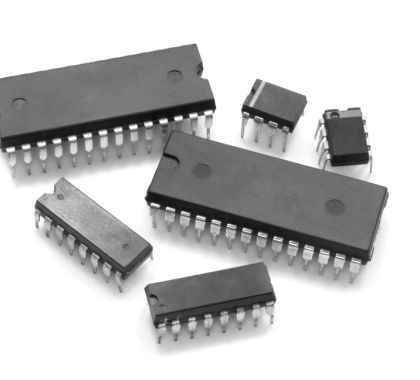Overview of the National Advanced Packaging Manufacturing Program

The CHIPS and Science Act allocates $50 billion to the Department of Commerce, prioritizing the National Advanced Packaging Manufacturing Program (NAPMP) within CHIPS R&D. This initiative aims to bolster U.S. dominance in advanced packaging, fostering domestic manufacturing and skilled labor essential for semiconductor packaging.
NAPMP is integral to CHIPS for America's mission, accelerating the deployment of crucial semiconductor technologies by facilitating access to domestic research, tools, and facilities. This emphasis underscores the pivotal role of NAPMP in advancing U.S. leadership and competitiveness in semiconductor innovation, crucial for maintaining technological supremacy on a global scale.
At its core, the NAPMP seeks to address critical challenges facing the industry, from improving the performance and reliability of semiconductor packages to enhancing manufacturing processes and reducing costs. By promoting research, development, and deployment of cutting-edge packaging technologies, the program looks to strengthen the nation's capabilities in semiconductor manufacturing and maintain its leadership position in the global marketplace.
The Importance of Packaging
Packaging plays a critical role in ensuring the reliability, performance, and functionality of electronic components in various applications. Different types of packaging are used depending on factors such as the type of component, its intended use, environmental conditions, and cost considerations.

At a basic level, packaging serves several purposes:
Protection. Packaging provides physical protection to the delicate electronic components from environmental factors such as moisture, dust, and mechanical damage. This protection is essential for maintaining the reliability and functionality of the components.
Electrical insulation. Packaging materials are often chosen for their electrical insulation properties to prevent short circuits or interference with other components.
Thermal management. Some packaging designs include features to help dissipate heat generated by the electronic components during operation. Effective thermal management is crucial for preventing overheating, which can degrade performance or lead to component failure.
Mechanical support. Packaging provides structural support to the electronic components, helping to withstand mechanical stresses such as vibration and shock.
Interconnection. Packaging may include features for connecting the electronic component to other components or to a larger system, such as pins, leads, or connectors.
Identification and labeling. Packaging often includes labels, markings, or codes that provide information about the component, such as part number, manufacturer, and specifications.
At a more advanced level, advanced packaging is the main enabler of most advanced digital products. Without advanced packaging technologies based on heterogeneous integration, we would not have processors with high compute density, which enable cloud computing applications, mobile devices, and advanced ASICs and SoCs with very small footprints. For example, Apple and Samsung both rely on components that can only be built with high reliability and yield using advanced packaging techniques.
Packaging will continue to be the main driver of more advanced components as more advanced devices, ranging from smartphone processors to GPUs, take a chiplet-based design and assembly approach. Advanced packaging techniques for these components were historically only available in Asia, but the NAPMP aims to change this dynamic.
Understanding the National Advanced Packaging Manufacturing Program
Traditional device packaging techniques are no longer sufficient to meet the demands of emerging applications such as artificial intelligence, Internet of Things (IoT), 5G, and other technologies. Advanced packaging technologies enable the integration of diverse functionalities, increased performance, and enhanced reliability while meeting the stringent requirements of modern applications.
The NAPMP encompasses a wide range of initiatives and activities aimed at advancing the state-of-the-art in packaging technology. Some of the key objectives of the program include:
Technology Development. Investing in research and development, including the development of new materials, processes, and designs, driving industry advancements and innovation.
Workforce Training. Providing training and education programs to cultivate a skilled workforce capable of supporting the adoption of advanced packaging solutions.
Industry Collaboration. Facilitating collaboration between industry partners, academic institutions, and government agencies to accelerate technology transfer and commercialization of advanced packaging technologies.
Supply Chain Resilience. Strengthening the resilience of the semiconductor supply chain by diversifying sourcing options, reducing dependencies on foreign suppliers, and mitigating supply chain risks.
Competitiveness. NAPMP enhances the competitiveness of the U.S. semiconductor industry. By driving innovation, reducing costs, and improving product performance, the program enables American companies to maintain their leadership position and seize opportunities in emerging markets.
Implications for the Supply Chain
From a strategic perspective, the NAPMP enhances the resilience and competitiveness of the U.S. semiconductor industry, reducing dependencies on foreign suppliers and safeguarding against supply chain disruptions. By fostering collaboration and innovation, the program strengthens the nation's position as a global leader in semiconductor manufacturing, driving economic growth and technological advancement.
For participants in the supply chain, the NAPMP offers a multitude of benefits and opportunities. By investing in advanced packaging technologies, manufacturers can improve product performance, reduce costs, and enhance the reliability of their offerings. Moreover, the program's focus on workforce development ensures a steady supply of skilled professionals equipped to navigate the complexities of modern packaging technologies.
Issues to Consider
While the strength of the NAPMP is evident, there are some longer-term issues to consider.
Long-Term Commitment. One potential weakness of the NAPMP is the need for sustained, long-term commitment and funding. Achieving meaningful advancements in packaging technology requires continuous investment and support over an extended period. Failure to maintain funding levels or political support could undermine the program's effectiveness and impede progress.
Technology Transfer Challenges. Despite efforts to facilitate technology transfer and commercialization, the process can still be challenging and time-consuming. Bridging the gap between research and commercialization requires effective collaboration between academia, industry, and government.
Global Competition. The semiconductor industry is highly competitive, with major players in Asia and Europe investing heavily in packaging technology and manufacturing capabilities. While the NAPMP aims to strengthen the U.S. industry's competitiveness, it must contend with intense global competition and rapidly evolving market dynamics.
Regulatory and Policy Constraints. Regulatory and policy constraints can pose challenges to the implementation of advanced packaging technologies. Issues such as intellectual property rights, export controls, and environmental regulations may impact the development and adoption of innovative packaging solutions, requiring careful navigation and compliance.
Adoption Barriers. Despite the potential benefits of advanced packaging technologies, adoption barriers may exist, particularly among smaller companies with limited resources and expertise. Overcoming these barriers requires targeted support, outreach efforts, and incentives to encourage broader adoption of advanced packaging solutions.
The National Advanced Packaging Manufacturing Program can maximize its impact and contribute to the continued growth and innovation of the semiconductor industry. While the program holds significant promise in advancing packaging technology and strengthening the competitiveness of the U.S. semiconductor industry, it also faces challenges and limitations.








